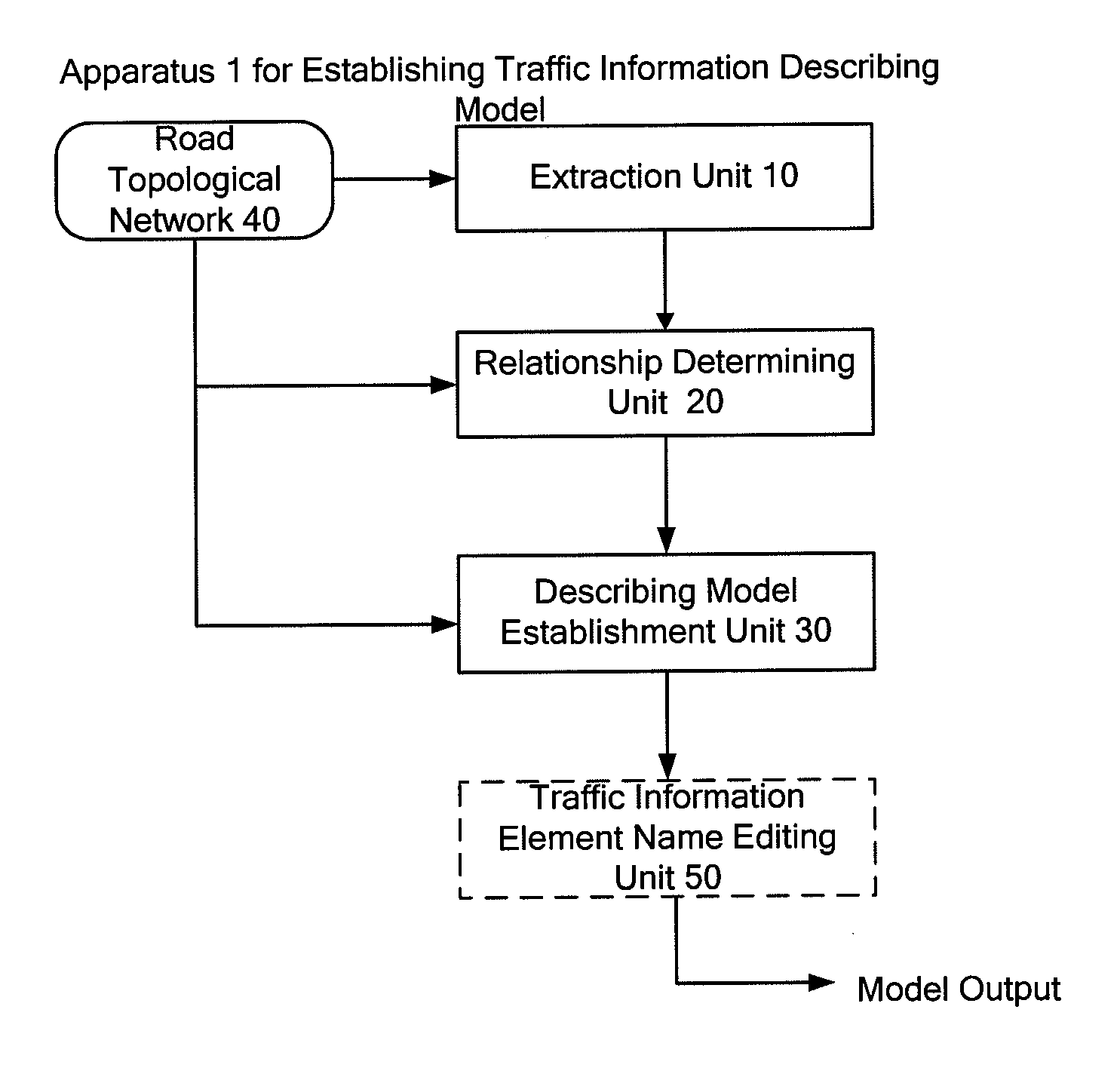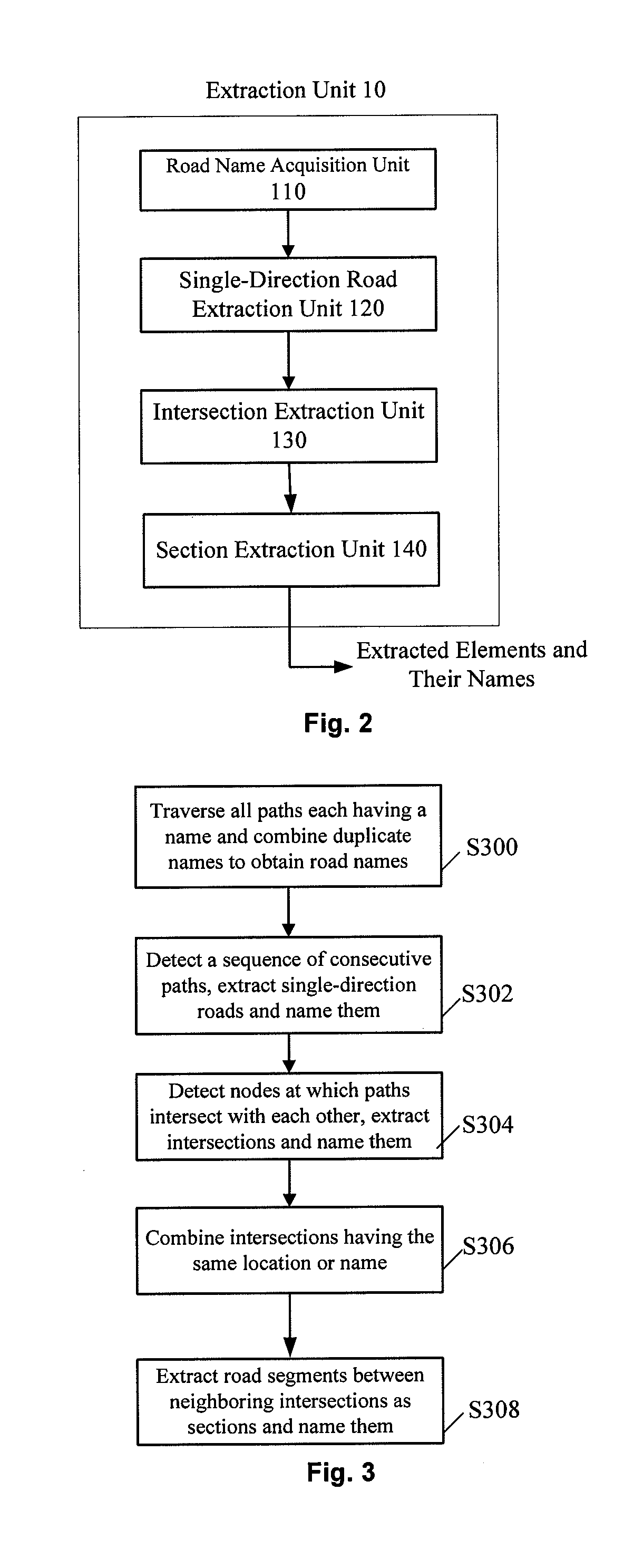Method and apparatus for traffic information conversion using traffic information element knowledge base
a technology of traffic information and knowledge base, applied in the field of traffic information description, can solve the problems of increasing severe traffic jams, limited to arterial road networks in general, subject to objective constraints such as the number of probe vehicles, and achieve the effect of improving production efficiency, high efficiency, and effectively increasing the accuracy of map matching of the probe vehicle technology
- Summary
- Abstract
- Description
- Claims
- Application Information
AI Technical Summary
Benefits of technology
Problems solved by technology
Method used
Image
Examples
Embodiment Construction
[0063]The basic constituent elements of a road topological network on a widely-used digital navigation map are paths and nodes formed by intersection of the paths. A road, such as a trunk road or a side road, can be divided into a number of paths based on roadways or particular lengths. Any point at which the paths intersect with each other is defined as a node. As such, in the real world, a road generally corresponds to a plurality of paths in the road topological network, and an intersection at which two roads intersect with each other generally corresponds to a plurality of nodes. Furthermore, the attributes of a path are defined by a start node and an end node, and the attributes of a node are defined by neighboring paths. Only some of the paths each have the name of the road to which it belongs. Hence, in a real application, traffic information based on the road topological network cannot answer a question like “How is the traffic condition of Road X”, since “Road X” cannot be ...
PUM
 Login to View More
Login to View More Abstract
Description
Claims
Application Information
 Login to View More
Login to View More - R&D
- Intellectual Property
- Life Sciences
- Materials
- Tech Scout
- Unparalleled Data Quality
- Higher Quality Content
- 60% Fewer Hallucinations
Browse by: Latest US Patents, China's latest patents, Technical Efficacy Thesaurus, Application Domain, Technology Topic, Popular Technical Reports.
© 2025 PatSnap. All rights reserved.Legal|Privacy policy|Modern Slavery Act Transparency Statement|Sitemap|About US| Contact US: help@patsnap.com



